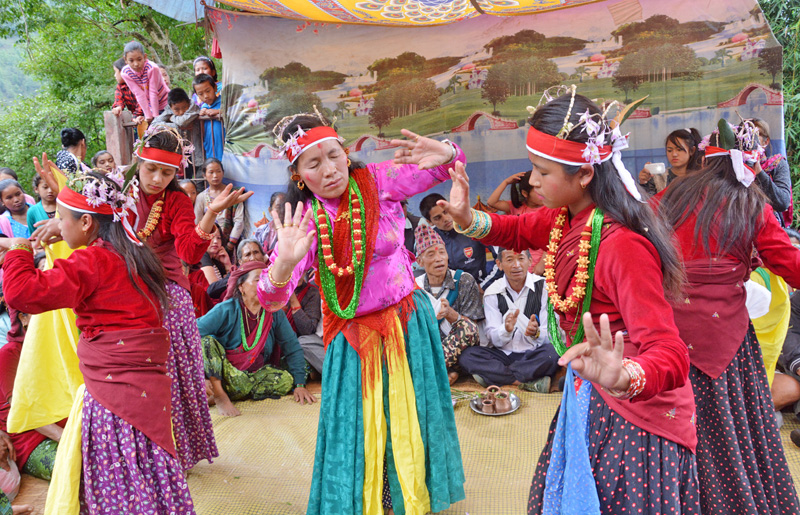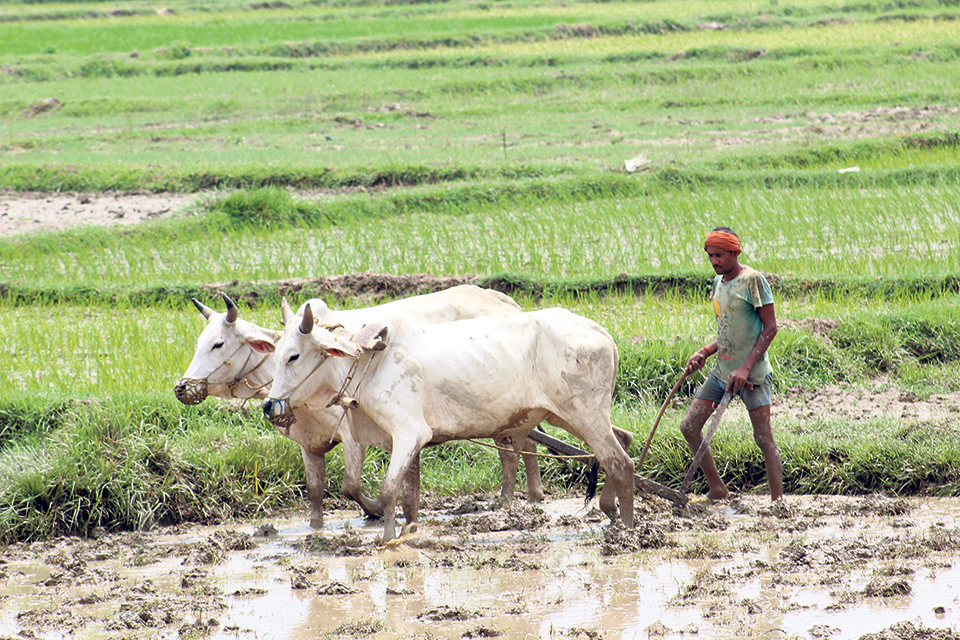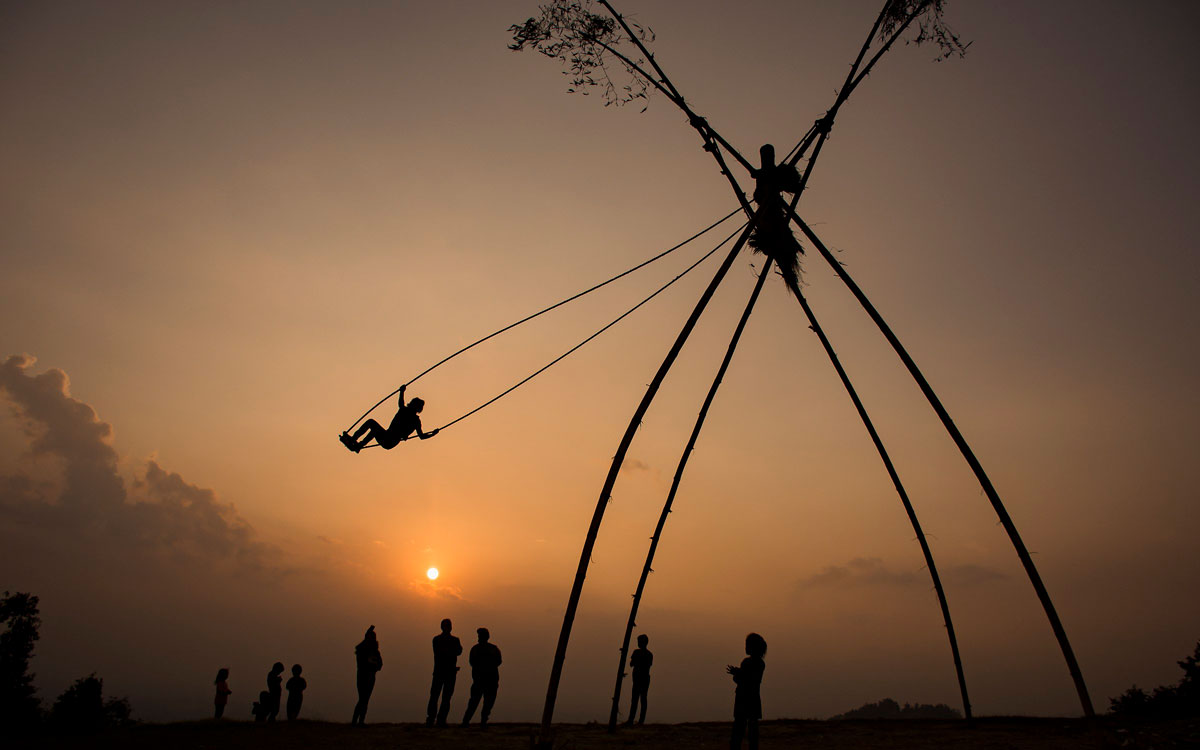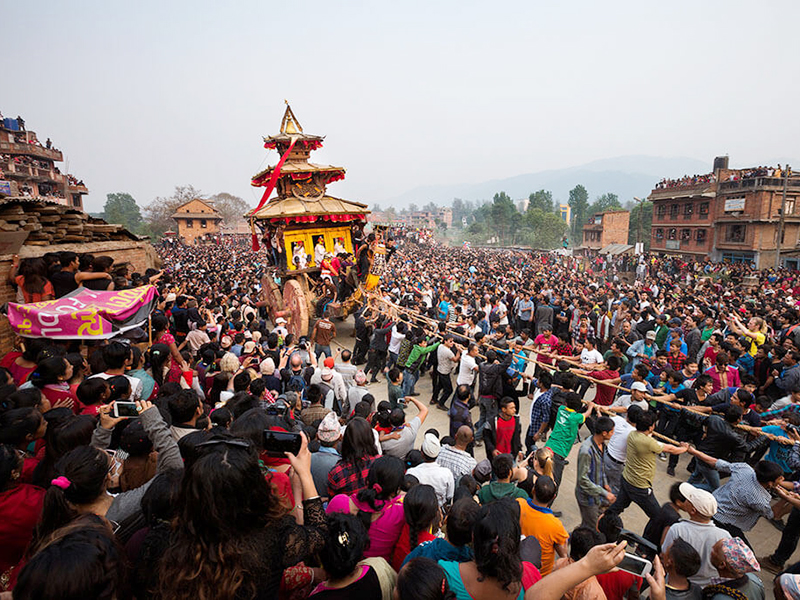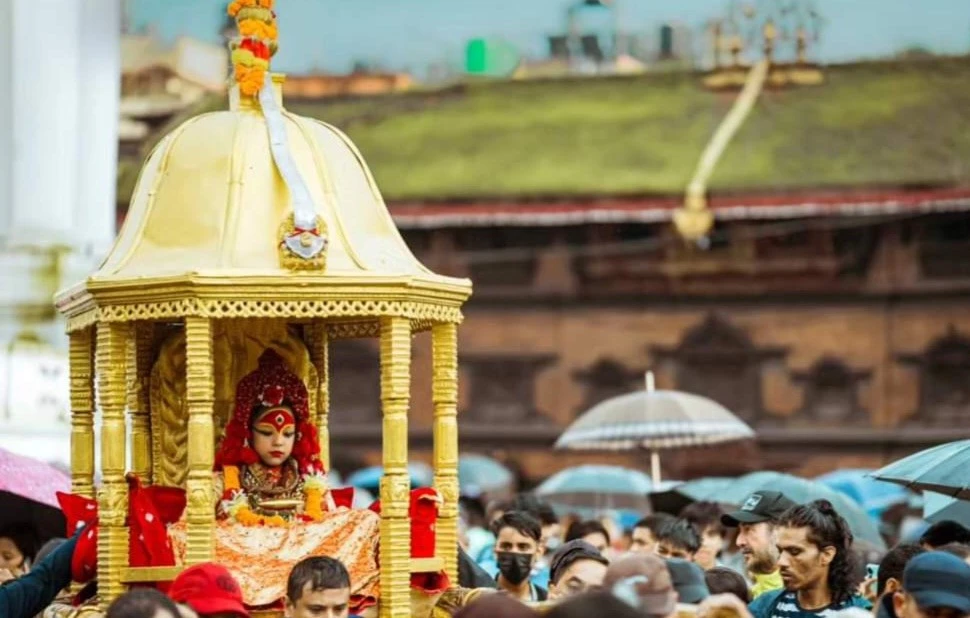Share this Article
Ghatu Naach is an important cultural tradition of the Gurung and Magar communities, holding deep historical and spiritual value. Ghatu Naach is a sacred and vibrant dance tradition practiced by the Gurung and Magar communities of Nepal. It is not merely a form of entertainment but a cultural ritual that embodies history, spirituality, and social values. The dance is performed during specific times of the year, depending on its type, and follows strict traditional procedures passed down orally through generations.
Types of Ghatu Naach
Ghatu Naach is divided into three main types: Sati Ghatu, Baramashey Ghatu and Kusunda Ghatu. Each variation has distinct characteristics and significance within the cultural framework.
1. Sati Ghatu: This type of Ghatu is performed only from Shree Panchami (December/January) to Baisakh Purnima (April/May). It narrates the story of a devoted queen who sacrifices herself upon the death of her husband. The dance is performed exclusively by women and the performers often enter a trance-like state, believed to be a form of spiritual possession by Kusunda spirits. Unlike other forms of Ghatu, Sati Ghatu is performed without musical instruments, relying solely on rhythmic clapping (Tali).
2. Baramashey Ghatu: This form of Ghatu is performed throughout the year and represents the daily lives of people, showcasing activities such as farming and household chores both men and women participate in this dance,men accompanied by singing and the beats of the Madal drum while women dance. The performance also involves the invocation of four deities: Devi Devchuli, Hemchuli, Gangachuli and Barachuli symbolizing divine blessings and protection.
3. Kusunda Ghatu: This rare form of Ghatu is deeply spiritual and is linked to ancestral worship. It involves complex rituals where the dancers and priests invoke ancestral spirits, seeking their guidance and blessings for the well-being of the community.
The Tale of King Pashramu and Queen Yambawati
A central aspect of Ghatu Naach is the tale of King Pashramu and Queen Yambawati, which is enacted through the dance. According to oral traditions, King Pashramu was a wise and just ruler, deeply devoted to his kingdom and his beloved queen, Yambawati. Their love was legendary, they ruled their land with great prosperity and harmony. However, fate had a tragic turn in store for them.
One day, King Pashramu was betrayed by his enemies and killed in a great battle. The news of his death shattered Queen Yambawati, who was left heartbroken. In her grief and devotion, she chose to perform the act of Sati, an ancient ritual in which a widow sacrifices herself on her husband's funeral pyre. This ultimate act of love and loyalty is the essence of Sati Ghatu, where the dancers embody the queen's sorrow and final moments before her sacrifice.
The story also includes the couple’s son, who was left behind to inherit the throne. The young prince had to navigate through hardship and uncertainty, growing up with the burden of his parents' legacy. The dance represents these themes of love, duty, loss and destiny making it a deeply emotional and spiritual experience.
Performance and Rituals
Ghatu Naach follows a structured sequence of events. The night before the dance villagers gather for a communal feast called Dar, which is a celebration with food, music and community bonding. On the day of the performance, the dancers and priests observe a ritualistic fast, consuming only fruits as a form of purification. The performance begins with a special puja conducted by the village priest.
The dance concludes on Baisakh Purnima, marking the official end of the ritual cycle. The final act is performed at designated temples or riverbanks, where priests conduct ceremonies to conclude the performance formally after this, Ghatu Naach is strictly prohibited until the next Shree Panchami. Although Baramashey Ghatu can technically be performed year-round, it is generally avoided until the ritual cycle restarts.
Historical Origins and Evolution
The origins of Ghatu Naach remain uncertain due to its oral tradition, but research suggests that the Magar community originally developed this dance. Over time, it was adopted by other ethnic groups like the Gurung, Dura, and Kumal. Historically, Ghatu Naach was deeply connected to Hindu rituals, aligning more closely with Magar traditions, as the Gurung people primarily followed Buddhism and Bon traditions.
Additionally, linguistic studies reveal that the songs of Ghatu Naach do not belong to the Gurung language or its dialects. Despite this, some members of the Gurung community believe that King Prashuram, a key figure in Ghatu narratives, was a Gurung ruler from the Lamjung district. However, no strong evidence supports this claim.
Selection of Dancers (Ghatusari)
The selection of dancers, called Ghatusari, is a sacred process. Traditionally, it takes place on Shree Panchami through a special puja. The chosen girls must be prepubescent, with uncut hair since birth and no scars on their bodies. During the selection process, the girls sing Ghatu songs and those who experience spiritual possession are believed to be chosen by divine forces to perform the dance
Costumes and Symbolic Props
The dancers wear traditional attire adorned with intricate jewelry and crowns made from flowers and roasted paddy. Various props are crafted each year for the performance, symbolizing different aspects of the story:
- A wooden horse represents the king’s steed.
- A comb is used to signify the queen’s beauty and grace.
- A bow and arrow symbolize strength and protection.
These elements add depth to the performance, enriching its cultural and narrative significance.
Narrative and Cultural Representation
Ghatu Naach is a blend of storytelling and ritual. The dance conveys historical and mythological stories, most notably the tale of Pashramu and Yambawati, emphasizing themes of duty, devotion, and fate. The dance also integrates daily village life, illustrating the bond between cultural traditions and everyday experiences.
Moreover, the portrayal of deities and trance-like states reflects the community’s deep spiritual connection to their ancestors and divine forces. Through Ghatu Naach, knowledge, customs, and moral values are transmitted across generations.
Preservation and Contemporary Challenges
Although Ghatu Naach remains a significant cultural tradition, modern influences pose challenges to its preservation. The rise of urbanization, declining interest among younger generations, and the gradual erosion of oral traditions threaten its continuity. However, cultural organizations and local communities are working to safeguard Ghatu Naach by documenting its history, organizing training workshops, and incorporating it into school programs.
Additionally, the dance remains an integral part of festivals such as Tamu Lhosar, where it is performed as a celebration of cultural identity.
Conclusion
Ghatu Naach is more than a dance; it is a living testament to the history, beliefs and way of life of the Gurung and Magar communities. Its structured rituals, mesmerizing choreography and deep-rooted stories highlight Nepal’s rich intangible heritage by promoting awareness and encouraging participation, this tradition can continue to thrive, ensuring that future generations inherit and cherish this invaluable cultural treasure.
Categories:
Culture & Traditions
Tags:
Ghatunaach
,
Gurungheritage
,
Magarculture
,
Ethnicdancetradition
,
Ghatufestival

